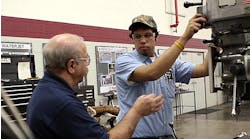Our world honors success more than merit, which is why one bold move or lucky turn can be far more rewarding than careful decision-making. But, the world also honors fame more than success, which is why even someone with ordinary business skill can be a celebrity panelist or product endorser. At some level of notoriety, scrutiny is waived.
This is why, I think, Fiat Chrysler Automobiles chief executive officer Sergio Marchionne can propose a merger with General Motors without obvious compunction about how such a proposal may reflect on his administrative skill, his understanding of the automotive market, his appreciation for the recent past of these two manufacturers, or the changes such a move would impose on the market he aims to serve. That is to say, if the suppliers to the automotive manufacturers are intended to support an ever-dwindling number of manufacturers, and if customers are meant to have a choice between Manufacturer 1 and Manufacturer 1a, then why engage in the enterprise of manufacturing at all? And yet, his is such a bold proposal that he gets credit for his ‘vision.’
According to a New York Times report, Fiat Chrysler proposed merging his company with GM by email to his counterpart, GM CEO Mary Barra, explaining his view consolidation would save production and administrative costs. Such a merger would save billions of dollars in overhead, development, sales, and marketing costs, according to Marchionne’s vision, and establish a greater advantage in purchasing costs.
According to the same Times report, the email proposal was rejected.
So, with the relief of knowing that at least for now this mega-merger idea is off the table, let me acknowledge that Marchionne is undoubtedly more capable in many things than I am, well able to manage an industrial empire, skilled at engineering and finance. He had the insight and patience to take on the Chrysler organization when it was on the brink of failure in 2009, and restored it to viability. The turnaround of the Chrysler organization has had many critics, but that is unavoidable in the churn of business. He revived a failed enterprise and restored it to automaking viability.
Was that not because he wanted to helm an enterprise producing quality vehicles? Was it not because he saw the deficiencies of an older organization and understood how to refit it to the current global standards for manufacturing?
Make no mistake: the global manufacturing market is surely what Marchionne has in mind when he suggests that the automotive sector needs to be consolidated. If you believe that “consolidation” was what we witnessed by way of a federal bailout of Chrysler and General Motors, followed by a rapid scaling down of both organizations, then you are living in 2009. Or 1989.
As a man of vision, Marchionne understands that in China and India, across Asia and other areas, production volume and product availability are the winning strategies. The need for basic transportation is a more fundamental factor shaping the global automotive industry than North American sentimentality about beautiful cars and god jobs.
While it would be nice to hold on to a bit of that legacy, it provides virtually none of the value on which global automaking operates now. What North America does provide is innovation in design and engineering (via the automakers themselves, as well as their supply chain partners) and financial capital (via the buyers of cars, willing to pay for style and comfort and asking merely not to be gouged on the price.)
It is these interests that deserve some merit in any consideration of the future of automaking. It’s fine to stand atop an enterprise and see the global market laid out for the taking, imagining the revenue streams and downplaying the difficulty of imposing any sort of standard on the vast organization that would result. The thrill is in the conquest, not in maintaining and growing the organization that results.
The vision of consolidation I describe may be grim, but it’s also improbable. The effort to execute it would exhaust the resources of both FCA and GM. Besides, which, there are hopeful signs that new technology and performance standards are making their way through the supply chain, from the developers to the consumers. Today’s automaking giants would be smarter to focus on those possibilities than to try consolidating today’s assets.
There is a market for new ideas and products. But the surest way to dampen progress is to consolidate all the risks of an enterprise in the expectation that cutting costs can be counted as success.









